Use the Face milling page to specify the face definition parameters. To create a Face milling toolpath you must have a block and a tool.
Face milling works with any tool and uses the flat end of the tool.
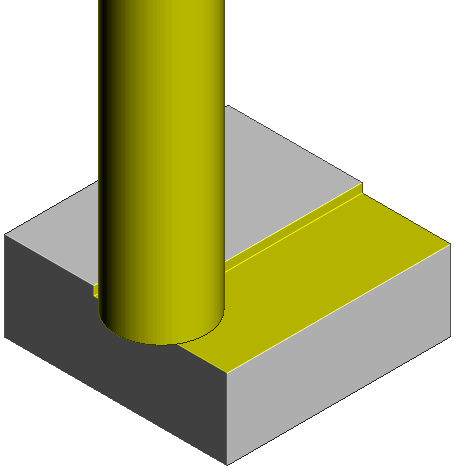
This page contains the following:
Face Z position (z) — Enter the Z height of the face. Ideally this is the block height.
 — Click and then click on a curve at the relevant Z height in the graphics window to determine the face height.
— Click and then click on a curve at the relevant Z height in the graphics window to determine the face height.
XY expansion (e) — Enter an allowance in the X and Y directions on the block. This is useful where the actual stock is larger than the PowerMill block as it ensures that the face milling toolpath machines all of the stock.
Engagement feed rate (%) — Enter a value to control the feed rate of the toolpath, as it approaches the block, until it fully engages with the block. This is useful to prevent tool inserts from breaking when they plunge into the model with high feed rate. By default this is set to 100% so there is no engagement feed rate reduction.
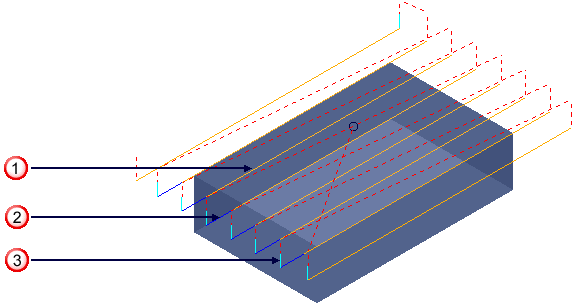
 - Cutting feed rate
- Cutting feed rate
 - Engagement feed rate
- Engagement feed rate
 - Plunging feed rate
- Plunging feed rate
Tolerance — Enter a tolerance to determines how accurately the toolpath follows the block contours.
Style — Select the segment order:
- One Way — All the passes, except for the last one, are in the same direction. The last pass is in the opposite direction. This helps to produce a clean surface. If the last pass is in the same direction as the other passes, then it may leave burrs on the edge as the material is pushed outwards.
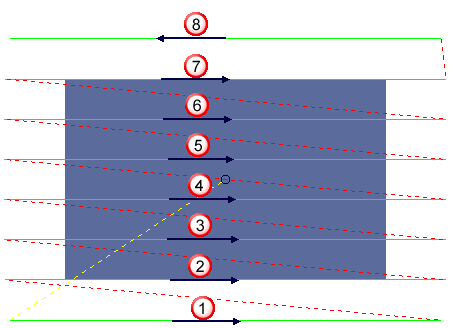
- Two Way — Passes are in alternate directions.
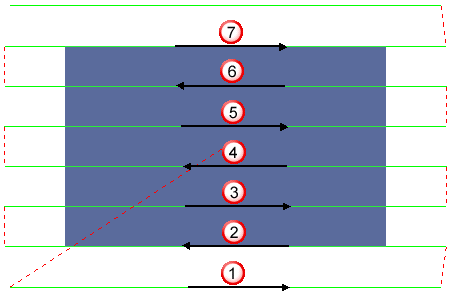
- Spiral — The passes start at the outside of the block and work towards the middle.
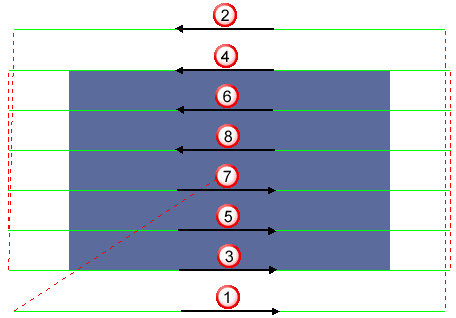
- One Pass — A single pass is generated, just off the centre of the block. This is useful for facing a block which is smaller than the tool diameter. The pass is off-centre to avoid excessive tool wear by effectively avoiding machining small slivers.
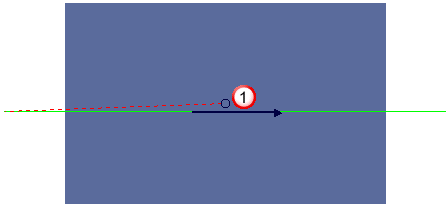
Stepover — Enter the distance between successive machining passes.
 Copy stepover from tool — Click to load the radial depth of cut from the active
tool's cutting data. The radial depth of cut is measured normal to the tool axis.
Copy stepover from tool — Click to load the radial depth of cut from the active
tool's cutting data. The radial depth of cut is measured normal to the tool axis.
 .
.